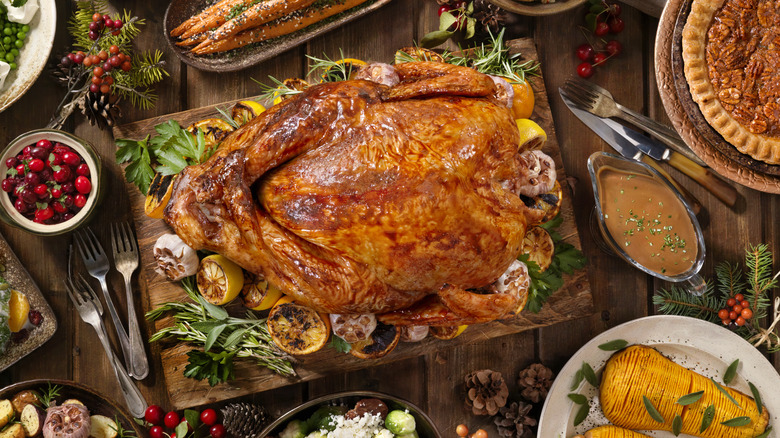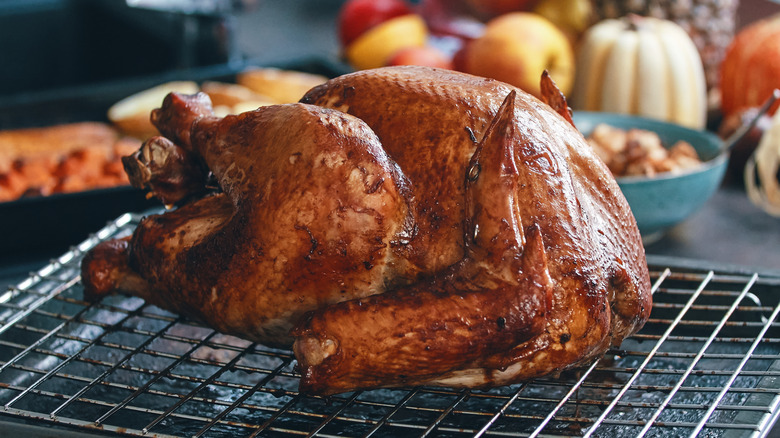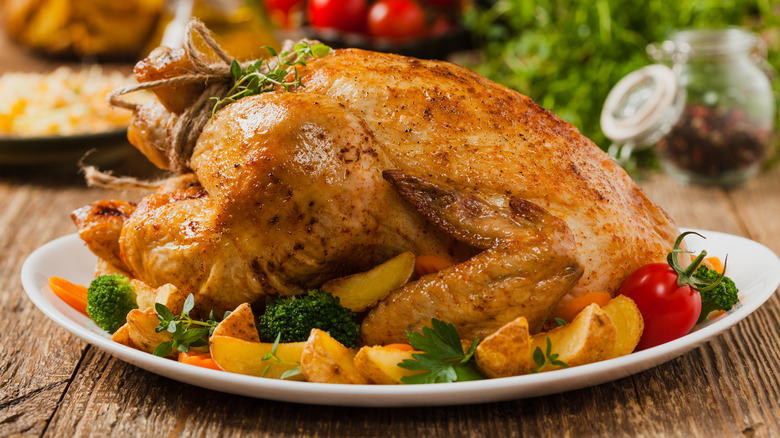Why It's Actually A Mistake To Tent Your Turkey With Foil
Turkey is one of those traditional dishes that everyone and their mother has the perfect trick for. Some swear by brining, while others are religious basters for the most tender meat. Advice abounds when the big bird goes in the oven. However, some of these "tried and true" cooking methods can actually be among the biggest turkey-making mistakes. One such mistake is tenting your turkey with a big piece of aluminum foil after it comes out of the oven. Contrary to popular belief, this will not keep your turkey warm while you make the gravy. Instead, it will only destroy the crispy skin you've worked so hard for.
When the turkey comes out of the oven, you absolutely need to rest it so the juices redistribute through the meat. Resting under foil is done, theoretically, to keep the turkey warm. However, this move will only give off moisture as the turkey cools, which will be trapped if it is covered with foil, resulting in flabby skin.
How to rest a turkey properly
So, what should you do if you toss the foil? Nothing. That's right, nothing. Let that bird rest. A turkey spends a lot of time in the oven; depending on its weight, hours in most cases. All that heat penetrates the very core of the turkey. It will hold onto it for a long time. You pull a turkey out of the oven when an instant-read thermometer hits 165 degrees Fahrenheit because the turkey temperature will continue to rise about 10 degrees in the 30 minutes it sits on your kitchen counter. A little piece of foil is not going to hold in that heat. Rest a turkey under 18 pounds for about 30 minutes; a larger turkey will need more time, sometimes up to an hour.
There is a time when it makes culinary sense to cover a turkey with foil, and this is when it is still in the oven. While we all love crispy, golden brown skin, no one loves charred turkey skin. Covering the breast with foil if it is getting too brown is a good tip; just be sure to measure the size you need and fit it to the breast before you put it in the oven.
Other tips for the crispiest turkey skin
If crispy turkey skin is your mission, start planning a few days before. Skip the wet brine and go for a dry brine. This is essentially a dry mixture of salt and spices that you spread over the turkey and allow to penetrate the skin before cooking it. Properly timing a dry brine for turkey is critical, so be sure to leave yourself one to four days and plenty of fridge space.
Spatchcocking a turkey is another handy trick to get perfectly crisp skin. Removing the backbone and flattening the bird will allow all the turkey parts to cook more evenly, resulting in more crispy skin for everyone. Learning to spatchcock a turkey is a handy skill, but for some, it can be complicated. If it's not your thing, be sure to at least use a rack in your baking pan so that the air can circulate around the turkey, allowing the fat to drip out of the skin to crisp it up. And while basting seems like a good idea for adding moisture, it really doesn't, and it could destroy the skin.


